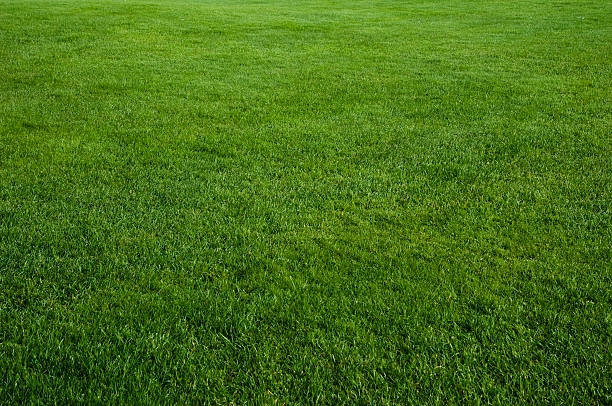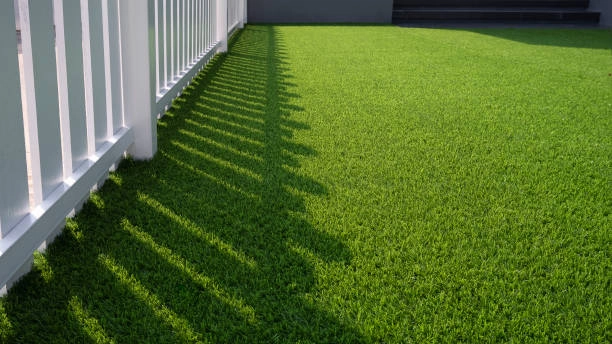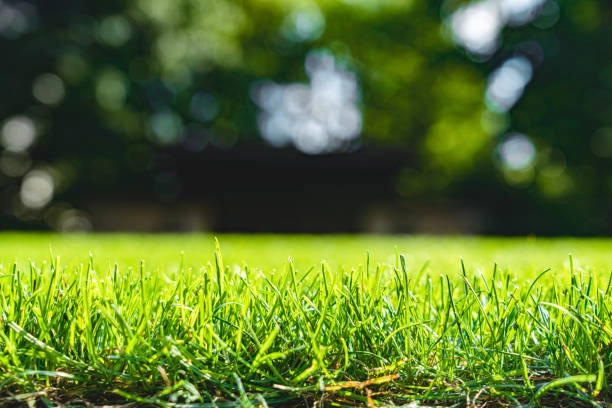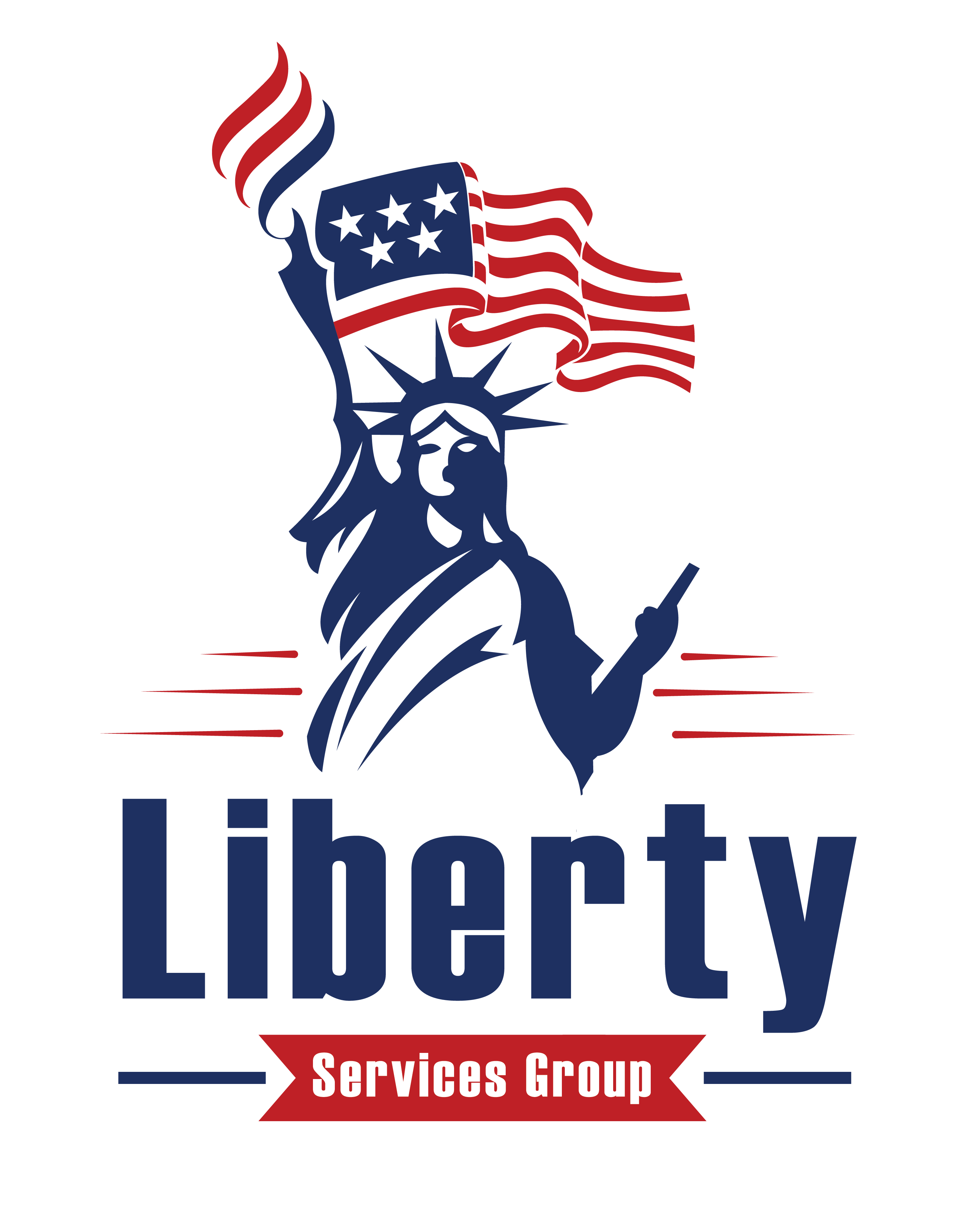Choosing between turf grass and natural grass for your yard is a decision that depends on several factors, from aesthetics and maintenance to environmental impact. While natural grass offers a classic, vibrant appeal, it requires regular watering, mowing, and upkeep. Turf, or artificial grass, provides a low-maintenance alternative that stays green year-round, conserving water and minimizing yard work. However, each option has its unique advantages and challenges. This guide explores the benefits and drawbacks of both turf and natural grass, helping you decide which is best suited to your lifestyle, budget, and environmental priorities.

1. Appearance and Aesthetic Appeal
- Natural Grass: There’s something undeniably charming about natural grass. It provides a soft, vibrant look that changes subtly with the seasons. The natural feel underfoot, the smell of freshly cut grass, and the slight variations in color are hard to replicate.
- Turf Grass (Artificial Grass): Today’s artificial grass products are designed to mimic natural grass closely, offering a consistent look that stays green year-round. High-quality synthetic lawns like Liberty Turf’s artificial grass feature a realistic appearance with various shades and textures that closely resemble natural grass. Unlike plastic artificial grass of the past, modern synthetic lawns provide a soft, natural feel that’s nearly indistinguishable from the real thing.
Verdict: Both options can create an attractive lawn, but if you prefer a yard that looks lush and green regardless of the season, artificial grass may be the way to go.
2. Maintenance Requirements
- Natural Grass: Maintaining a natural lawn requires regular mowing, watering, fertilizing, and pest control. In dry climates like Arizona, natural grass demands significant water to stay green and healthy, which can be time-consuming and costly.
- Turf Grass: Artificial grass is known for its low maintenance. With turf, there’s no need for mowing, watering, or fertilizing. At Liberty Turf, we design our synthetic lawns to be as low-maintenance as possible, saving you time and effort. While you may need to rinse it occasionally and brush it to maintain its appearance, artificial grass is a far less demanding option.
Verdict: For busy homeowners or those looking to reduce yard work, artificial grass offers a hassle-free alternative to natural grass.
3. Water Conservation
- Natural Grass: In areas prone to drought, keeping natural grass green can be challenging. Watering requirements for natural lawns are high, especially during hot summer months, making natural grass less sustainable in water-scarce regions.
- Turf Grass: One of the significant advantages of artificial grass is water conservationartificial grass doesn’t need watering, which can significantly reduce your water bill and is beneficial for areas like Scottsdale, where water conservation is crucial. Liberty Turf’s products allow homeowners to enjoy a lush lawn without the environmental cost of extensive water use.
Verdict: For eco-conscious homeowners, artificial turf is the clear winner in terms of water conservation.
4. Durability and Longevity
- Natural Grass: Natural grass can withstand heavy foot traffic, but it is prone to wear and tear, especially in areas where kids or pets play. Over time, frequent use can cause patches, bare spots, and thinning.
- Turf Grass: Artificial grass is exceptionally durable, capable of withstanding heavy use without showing signs of wear. Liberty Turf’s artificial grass is UV-resistant, meaning it won’t fade or degrade under intense sunlight. Artificial grass is built to last between 15 and 20 years, even in areas with high foot traffic, making it an excellent choice for families, pet owners, or commercial spaces.
Verdict: For long-term durability, artificial artificial grass provides a resilient, low-maintenance solution that can handle heavy usage.

5. Environmental Impact
- Natural Grass: While natural grass is renewable, maintaining it often involves using fertilizers, pesticides, and large quantities of water. These chemicals can leach into the soil, affecting nearby plants and wildlife. Additionally, lawnmowers contribute to carbon emissions, making natural grass maintenance less eco-friendly.
- Turf Grass: Artificial grass reduces environmental impact by eliminating the need for watering, fertilizers, and pesticides. However, it is made of synthetic materials, which can raise concerns about sustainability. Liberty Turf focuses on creating eco-friendly turf products that minimize harm to the environment, but it’s essential to note that artificial grass is not biodegradable.
Verdict: Artificial turf offers eco-friendly advantages in terms of water and chemical reduction, though natural grass remains biodegradable. Choose based on your environmental priorities.
6. Cost Considerations
- Natural Grass: Installing a natural lawn is typically cheaper upfront, especially if you’re using sod or planting grass seed. However, the ongoing costs of water, fertilizers, pest control, and lawn equipment maintenance can add up over time, making natural grass a more expensive option in the long run.
- Turf Grass: Artificial grass has a higher initial installation cost, but it provides significant savings over time due to minimal maintenance and water requirements. At Liberty Turf, we provide high-quality, long-lasting turf that saves homeowners money on maintenance and water bills, offering a cost-effective solution in the long run.
Verdict: Artificial grass is more cost-effective in the long term, especially in areas with high water costs or where maintenance is expensive.
7. Safety and Comfort
- Natural Grass: Natural grass provides a soft, cool surface, which can be ideal for children and pets. However, it can develop patches of dirt or mud, especially after rain, which can be messy.
- Turf Grass: High-quality artificial grass, such as Liberty Turf’s synthetic lawns, offers a comfortable, mud-free surface. Artificial grass is safe for children and pets, and its superior drainage prevents standing water, making it a safe choice for all weather. Some turfs can become warm in direct sunlight, though newer products are designed to reduce heat absorption.
Verdict: For a clean, safe yard with no mud, artificial grass is a convenient choice, though natural grass remains cooler on hot days.
8. Pet-Friendliness
- Natural Grass: Dogs and other pets enjoy running on natural grass, but pet waste can cause brown spots and patches. Natural grass also requires cleaning if pets frequently use it as a play area.
- Turf Grass: Artificial grass is pet-friendly and easy to clean. With Liberty Turf’s synthetic grass, pet waste can be rinsed off easily, and the turf’s drainage system ensures quick drying. Additionally, turf is durable enough to handle the wear and tear of playful pets without developing bald patches or discoloration.
Verdict: Artificial turf is a more practical solution for pet owners looking for an easy-to-clean, low-maintenance yard.
9. Impact on Home Value
- Natural Grass: A well-maintained natural lawn can add curb appeal, especially in regions where natural landscapes are popular. However, if the lawn is not in good condition, it can negatively impact property value.
- Turf Grass: Artificial grass can also add value by enhancing curb appeal with its evergreen appearance and low maintenance requirements. In areas where water conservation is prioritized, artificial grass may be viewed as an added benefit for prospective buyers.
Verdict: Both natural and artificial grass can increase home value, but turf may appeal more to buyers looking for a low-maintenance yard.

In conclusion, deciding between turf grass and natural grass for your yard comes down to your lifestyle, budget, and environmental values. Natural grass offers an authentic, traditional look but requires regular upkeep and substantial water. On the other hand, artificial grass provides a durable, low-maintenance, and eco-friendly solution, particularly in regions where water is limited.
With Liberty Turf’s high-quality artificial grass options, you can enjoy a beautiful lawn that is both environmentally friendly and easy to care for. For homeowners in Scottsdale, Liberty Turf offers professional installation and top-notch artificial grass products that bring beauty and functionality to your outdoor space. Whether you choose natural or synthetic, investing in a lawn that meets your needs and lifestyle will enhance your yard and make it a more enjoyable place for years to come. Contact us today to learn more about artificial turf and more!
Frequently Asked Questions
1. How does artificial grass compare to natural grass in terms of maintenance?
Natural grass requires frequent mowing, watering, and fertilizing to stay healthy, which can be time-consuming and costly. Artificial grass, on the other hand, is virtually maintenance-free. Synthetic lawns don’t need mowing or watering, and occasional rinsing is usually enough to keep them looking fresh.
2. What are the environmental benefits of choosing artificial turf over natural grass?
Artificial grass conserves water since it doesn’t need watering and eliminates the need for chemical fertilizers and pesticides. Although it’s made from synthetic materials, artificial turf helps reduce water usage and avoids soil contamination from chemicals used on natural grass.
3. Is artificial grass safe for children and pets?
Yes, artificial grass is safe for both children and pets. High-quality synthetic turf is designed to provide a comfortable, mud-free surface with efficient drainage to prevent standing water. This makes it a suitable option for play areas and pet-friendly spaces, without concerns about mud or allergens.
4. How does the initial cost of artificial grass compare to natural grass?
Artificial grass has a higher upfront installation cost than natural grass, but it proves more cost-effective in the long run due to minimal maintenance and no need for watering, fertilizers, or lawn equipment. Over time, synthetic turf can save homeowners money on both maintenance and water bills.
5. Does artificial grass impact home value?
Yes, artificial grass can positively impact home value by enhancing curb appeal and offering a low-maintenance landscape option. In areas where water conservation is prioritized, having an artificial turf lawn may be an attractive feature for prospective buyers looking for a sustainable and easy-care yard.
6. Can artificial grass handle heavy foot traffic and play areas?
Yes, artificial grass is highly durable and built to withstand heavy use, making it a great choice for families, pet owners, and commercial spaces. Quality synthetic lawns are UV-resistant and can last 15-20 years, maintaining their appearance and structure in high-traffic areas.
7. How do artificial grass and natural grass compare in terms of water conservation?
Artificial grass is a clear winner when it comes to water conservation, as it doesn’t require any watering to stay green. This is especially beneficial in dry climates and regions with water restrictions. Natural grass, however, demands regular watering, especially in hot weather, which can contribute to high water bills.
